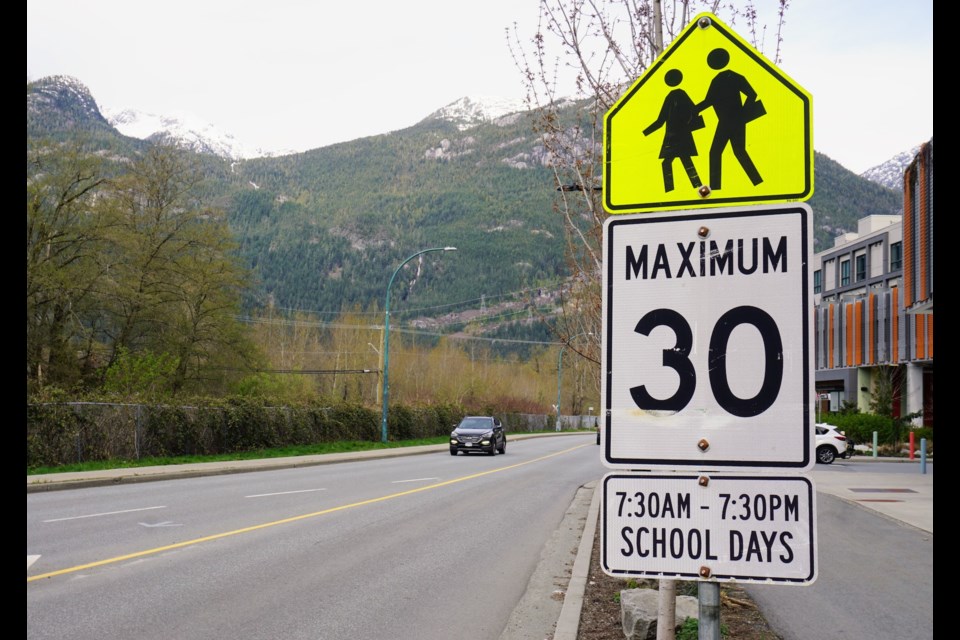Council endorsed some priorities for the remainder of their term, but prioritizing some initiatives over others drew the ire of a few in the audience.
After a long discussion about numerous priorities at hand on April 2, council unanimously endorsed priorities for the District of Squamish’s strategic plan including the three Squamish Nation-related priorities from the heritage strategy, speed limit reduction and traffic calming policy implementation, and policies for partnering with community organizations.
The reasoning behind needing to make these priority decisions, said chief administrative officer Linda Glenday, is that District staff are currently overloaded.
“Frankly, we are oversubscribed. We have a very ambitious staff. If you look at the municipal services list of tactics, that’s our next process is to pare that down to a realistic amount … that we can actually deliver in three years,” she said. “The reason we’re asking council to endorse the priority tactics this year is so that we are aligned.”
Vehicle residency policy options and implementing paid parking by 2025 were the two most debated topics that did not become priorities going forward. The paid parking aspect would continue to be worked on but the completion date would be pushed, likely beyond the current council’s term, and there was not a particular next step named for vehicle residency.
“When everything is a priority then nothing is a priority. So, it is incredibly important that we focus our work and understand the trade-offs that are happening,” said Mayor Armand Hurford. “There are trade-offs that impact people in every piece of our work.”
Vehicle residency
Council heard from a couple of people about vehicle residency before the priority presentation, as council opted to hear from them as part of unscheduled public attendance.
Later, Coun. Lauren Greenlaw brought forth a motion to consider removing prohibitive vehicle residency language from the camping bylaw at a committee of the whole meeting, but the motion did not pass as she was the only vote in favour.
Council was disrupted several times during the discussion by members of the public in the gallery during the discussion. Although what was said by the audience members was unclear, several on council asked for comments to be held while they deliberated.
“We have not seen a decrease in vehicle residents, which is to say the bylaw has not deterred sleeping in vehicles. Instead, it has served to make sleeping in vehicles less safe and less comfortable for those who are choosing this lifestyle and perhaps worse for those who are living in vehicles out of necessity,” Greenlaw said.
Greenlaw said broadening the definition of housing, plus increasing trash cans and toilets will better serve the community in the long run.
On the other hand, Coun. Jenna Stoner said simply changing the bylaw wouldn’t address the overarching challenges, as the bylaw was originally implemented to address problematic behaviour.
Coun. Andrew Hamilton echoed Stoner in his comments.
“The challenge I see here is that a viable, durable and fair solution is enormous,” he said. “I want to find a durable solution, but I don't see us having the capacity to find that solution in the short-term.”
Greenlaw countered Stoner and Hamilton saying that the dilemma is that neither short- or long-term solutions are ideal, so the issue doesn’t get resolved.
“The long-term solution is too expensive and the short-term solution is not perfect. So it just gets kicked down the road and never actually addressed,” she said.
Despite the motion failing, Greenlaw said she wanted to collaborate with council members on solutions.
Traffic calming before paid parking
Council also discussed the trade-off between focusing on implementing paid parking versus traffic calming.
Glenday informed council members that essentially they were choosing which to attempt to complete before the end of their term.
After a lengthy discussion—with some councillors initially voting in favour of a motion prioritizing paid parking that failed—council unanimously opted for traffic calming.
“It’s incredibly challenging for me to prioritize a halfway measure of paid parking over the pieces that are life safety. And when I reflect on other ways we’ve prioritized things, to me, life safety comes first,” said Hurford.
Coun. John French called the choice between the two a “total gametime decision,” but ultimately landed on speed reduction and traffic calming.
“When I think about speed limits … it takes me immediately to the young school kids who live in my complex and walk along Government Road to Mamquam Elementary School,” he said. “There’s a significant stretch of road where those students are walking and vehicles are travelling at well over 50 kilometres an hour. I want to protect those kids.”
Until April 8, residents can submit online feedback, or in person at The 55 Activity Centre, directly to the District about areas to improve road safety.
Along with these endorsed priorities, council also updated an objective of the strategic plan to include language around developing and implementing a memorandum of understanding between the Squamish Nation and the District. This particular piece is an objective that came about after the District and the Nation signed the Wa Iyı́̓m ta Sḵwx̱wú7mesh (Squamish Strong) Protocol Agreement in July 2023.
Council also OK’d considering trade-offs for future new initiatives rather than simply adding them to the plate.



